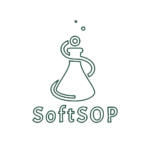In the food industry, maintaining rigorous standards for safety, quality, and compliance is non-negotiable. Central to this effort is a structured approach to documentation. A Document Control Log is an essential tool for managing, revising, and tracking critical documents across all areas of food production and manufacturing. Proper document control ensures that policies, procedures, and records remain accurate, accessible, and aligned with regulatory and certification requirements.
What is a Document Control Log?
A Document Control Log is a formal record that tracks the creation, revision, approval, and distribution of all key documents within a food manufacturing operation. This includes Standard Operating Procedures (SOPs), policies, work instructions, cleaning protocols, and quality records. By maintaining a centralized log, organizations can ensure that employees use only the most current and approved documents, reducing the risk of errors or non-compliance.
Why Document Control is Critical in Food Safety
Document control is a foundational component of food safety management systems. Its importance is reinforced across multiple regulatory and certification frameworks:
- CFR (Code of Federal Regulations): U.S. federal regulations, particularly Title 21 for food and drugs, require manufacturers to maintain accurate and up-to-date documentation to ensure compliance with Good Manufacturing Practices (GMP).
- ISO 22000: The international standard for food safety management emphasizes the need for controlled documentation, including procedures, manuals, and records that demonstrate consistent quality and safety.
- SQF (Safe Quality Food) and BRC (British Retail Consortium): These certification programs mandate document control logs to track revisions, approvals, and distribution of all food safety and quality documents.
- AIB International & Siliker Audits: Third-party inspections rely heavily on well-maintained document control systems to verify compliance with audit criteria and food safety standards.
Key Components of a Document Control Log
A comprehensive Document Control Log typically includes the following elements:
- Document Name and Identification Number: Ensures each document is uniquely identifiable.
- Revision Number and Date: Tracks the version history, allowing staff to know which edition is current.
- Author and Approver: Records who created and approved the document for use.
- Department/Area: Specifies which department or functional area the document applies to.
- Review Date: Indicates when the document is scheduled for the next review.
- Status: Shows whether the document is current, under revision, or obsolete.
- Distribution Record: Tracks where the document has been distributed and who has access.
The Process of Revising Documents
- Identification of Need for Revision: Changes in regulations, processes, or audit requirements may trigger updates.
- Drafting Revisions: The responsible department creates a revised document, incorporating necessary changes.
- Review and Approval: Managers, quality teams, or food safety specialists review the draft for accuracy and compliance.
- Updating the Log: The Document Control Log is updated with the new revision number, approval date, and status.
- Distribution and Training: The revised document is distributed to relevant personnel, with training if necessary, ensuring everyone is using the correct version.
- Archiving Obsolete Versions: Previous versions are archived but remain accessible for traceability and audit purposes.
Benefits of a Well-Maintained Document Control Log
- Regulatory Compliance: Demonstrates adherence to CFR, ISO, SQF, and BRC requirements.
- Audit Readiness: Facilitates inspections by AIB, Siliker, and other auditors.
- Consistency Across Operations: Ensures employees follow the latest procedures, reducing errors and improving food safety.
- Traceability: Provides a historical record of revisions and approvals, supporting accountability and transparency.
Conclusion
A Document Control Log is more than a record-keeping tool; it is a cornerstone of a proactive food safety culture. By systematically revising, approving, and tracking documents, food manufacturers can maintain compliance, support quality initiatives, and prepare for internal and external audits. Organizations that prioritize document control are better equipped to meet regulatory standards, achieve certification, and ultimately deliver safe, high-quality food to consumers.
References:
- U.S. Food and Drug Administration (FDA). “21 CFR Part 117 – Current Good Manufacturing Practice, Hazard Analysis, and Risk-Based Preventive Controls for Human Food.” FDA, www.fda.gov.
- International Organization for Standardization. “ISO 22000:2018 – Food Safety Management Systems — Requirements.” ISO, www.iso.org.
- Safe Quality Food Institute. “SQF Code: Edition 9.” SQFI, www.sqfi.com.
- British Retail Consortium. “BRC Global Standard for Food Safety Issue 9.” BRCGS, www.brcgs.com.
- AIB International. “Food Safety and Quality Audits.” AIB, www.aibinternational.com.
- Siliker Laboratories. “Food Safety Audit Guidelines.” Siliker, www.siliker.com.

